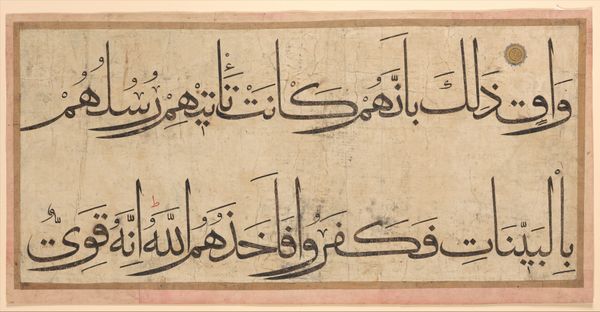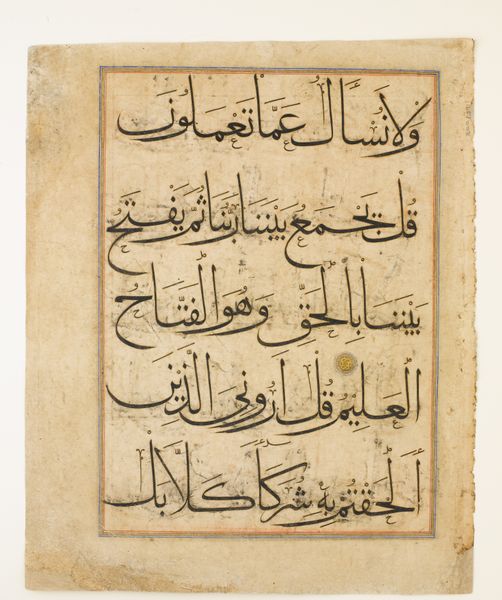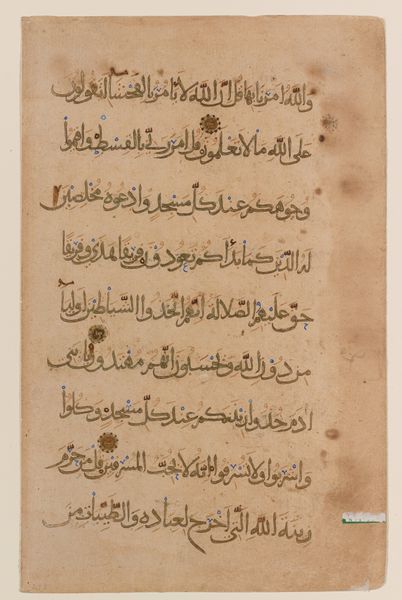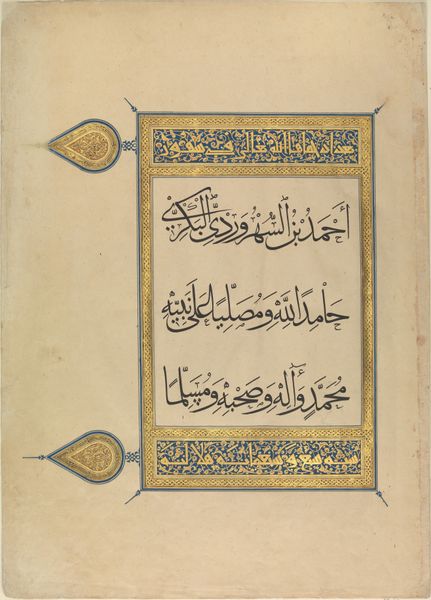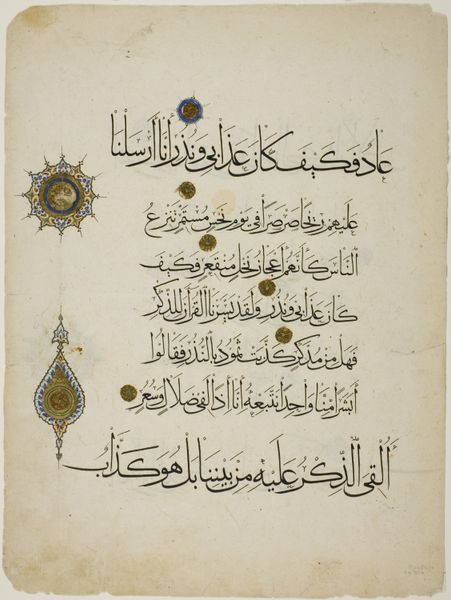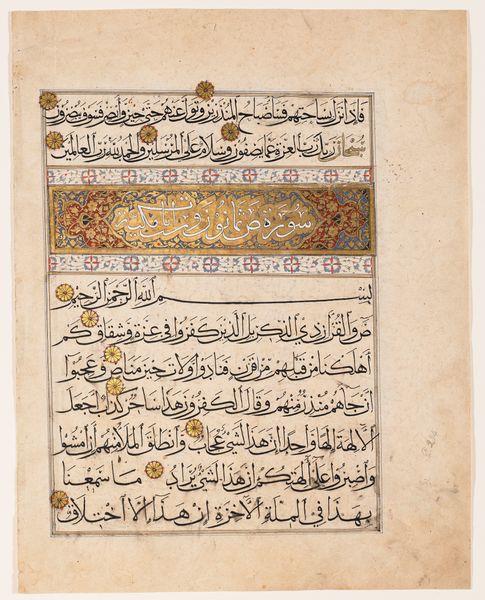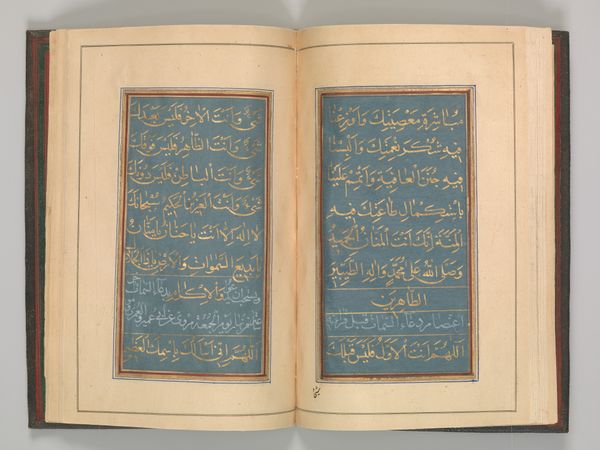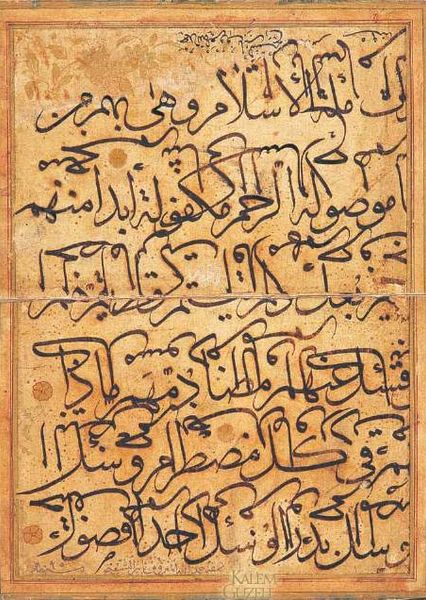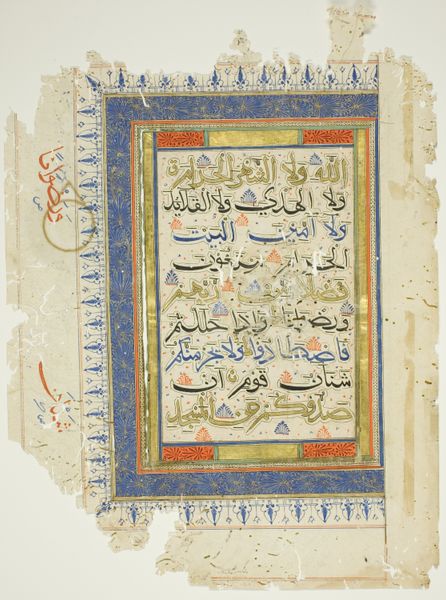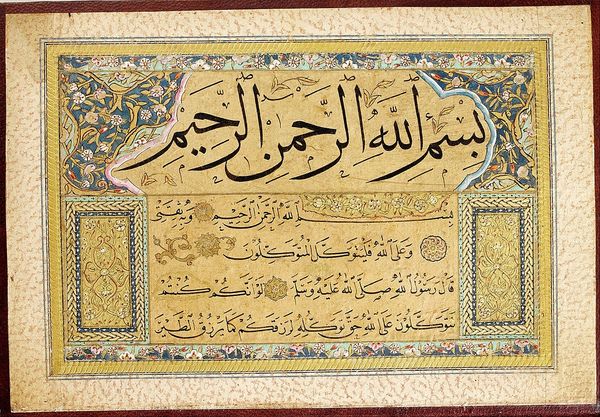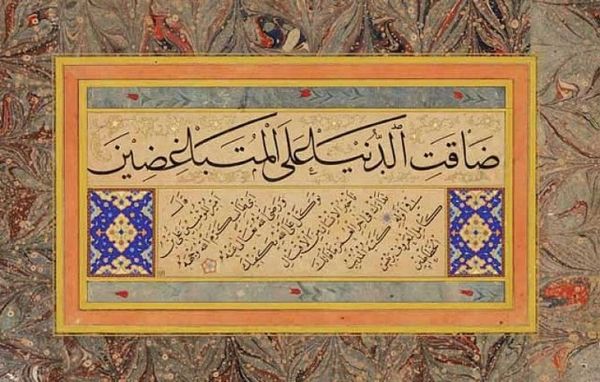
drawing, textile, ink
#
drawing
#
textile
#
ink
#
islamic-art
#
calligraphy
Dimensions: H. 28 7/8 in. (73.3 cm) W. 42 1/4 in. (107.3 cm)
Copyright: Public Domain
Curator: Before us, we have a section from a Qur'an manuscript, likely created between 1375 and 1425. The text is rendered in ink, possibly on textile, showcasing the exquisite art of calligraphy. Editor: It's quite striking. The stark contrast between the black ink and the off-white ground creates a sense of formality, of reverence. I’m immediately drawn to the powerful strokes of the calligraphy and the balance and structure. Curator: Indeed. Calligraphy held immense cultural significance within Islamic societies, far beyond mere writing. This section is likely not just a functional piece of writing but also a potent display of skill, wealth and status within the community who used or commissioned this. The time, labor, and quality of materials, reflect deeply held values. Editor: Yes, the material execution is superb. Looking closely, the curves and lines form their own abstract composition, separate from the meaning they carry. The line weight varies, giving a rhythmical quality, like a musical score across the page. It really transcends simple communication. Curator: Consider too that such manuscripts, due to the skill involved, were often a collaborative process, with different artisans preparing the parchment, mixing the inks from raw materials, and, of course, the master calligrapher, or several of them. These objects became part of a wider economy in terms of Islamic artistic expression. Editor: It's true. Analyzing it purely visually, though, I see a piece balanced between restraint and expression. The forms adhere to a strict calligraphic system but there is so much life. Note the angles and deliberate variations, imbuing the work with a surprising dynamism. Curator: The labor invested to generate the uniformity you’re noting shouldn’t be glossed over. Such pieces tell stories of trade networks of ink production. The textile, likely imported, shows global economic networks during its time. Each aspect from ink and parchment to the trained hand, has layers of embodied social meaning. Editor: I’ll grant you all of that! But ultimately, the design draws the eye and elevates the spirit, whether one understands the text or not. The flow of line and spatial relationship form a harmonious, beautiful whole. Curator: A wonderful point on which to pause, demonstrating, that even beyond matters of production, these artistic endeavours reflect and shape collective aspirations, one of balance, discipline, but ultimately, the beautiful forms we have just been discussing. Editor: Precisely. It exemplifies how deep analysis of its intrinsic elements combined with contextual awareness, makes us understand better about human endeavors through ages.
Comments
No comments
Be the first to comment and join the conversation on the ultimate creative platform.
